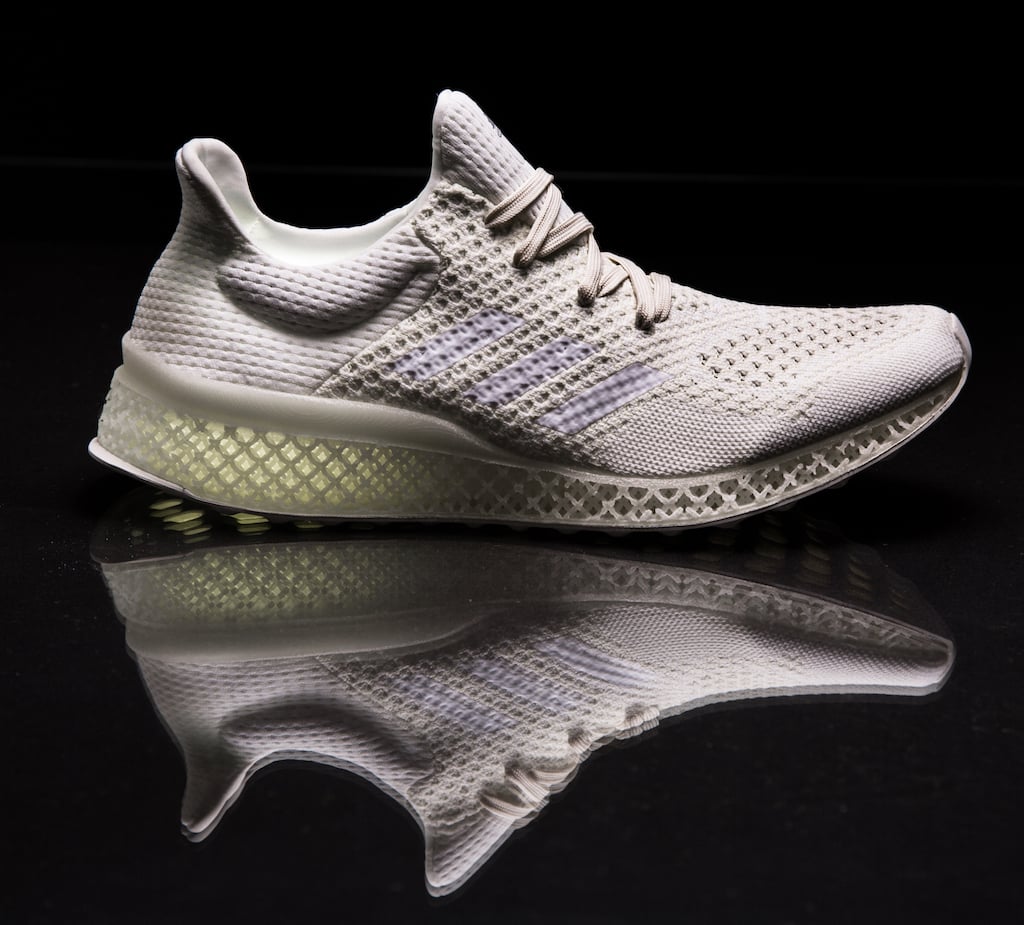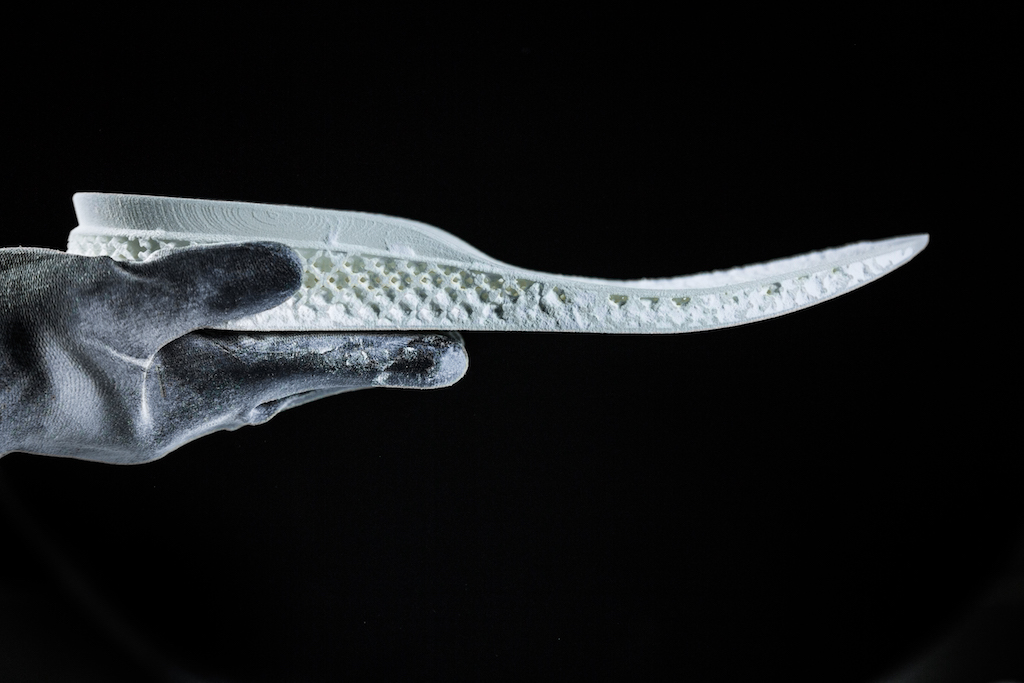
Shoe giant Adidas has partnered with Materialise on a new concept for 3D printed shoes: Futurecraft 3D.
The concept’s goal is to develop a way to create custom-fitted shoes in a dynamic process involving 3D printing. Here’s how they describe their goal:
Imagine walking into an adidas store, running briefly on a treadmill and instantly getting a 3D-printed running shoe – this is the ambition of the adidas 3D-printed midsole. Creating a flexible, fully breathable carbon copy of the athlete’s own footprint, matching exact contours and pressure points, it will set the athlete up for the best running experience. Linked with existing data sourcing and footscan technologies, it opens unique opportunities for immediate in-store fittings.
You can see the concept in action, or at least the end result, in this video:
Note that they’re not actually 3D printing the entire shoe; instead they’re printing the midsole, which sits between the bottom surface that contacts the ground and the conventional upper portion. However, that midsole is the key part that controls the mechanical motion of the foot during walking and running.

It sounds breathtaking, and it will be once properly implemented. For now, it’s merely a concept, and part of Adidas’ “Futurecraft” series. Futurecraft is their “sandbox” for developing new products and processes.

Materialise explains:
The production breakthrough will take the running shoe standard to the next level, offering unprecedented individualized support and cushioning for every foot, to enable athletes to perform at their best.
The design of the midsole is fascinating. Devised by Materialise, the component includes a complex internal structure that’s both light and strong. It’s similar to other designs that fully leverage the ability of 3D printing to manufacture geometries not possible with other techniques.

The midsole is printed in TPU, a strong, but flexible plastic that is also sometimes used by desktop 3D printers. Unlike the desktop 3D printers that use TPU filament, Materialise’s process involves laser sintering fine TPU powder. They say it is “the first durable fully-flexible 3D printing material to be used in a consumer product, through Materialise’s certified manufacturing process”.
While the 3D printing production process appears to be in good shape, we’re wondering about the software required to dynamically adapt the design for the wearer. They describe “running on a treadmill”. This likely involves some type of sensors that would detect feet and and measure them, both width and length and somehow the depth, too, which is necessary for preparation of the midsole 3D model.
The formula for producing midsoles from measurements has been known by podiatrists for years, but ensuring accurate and reliable 3D models from treadmill sensors in a store setting will certainly be quite challenging.
We’re looking forward to future developments.
Via Adidas and Materialise

